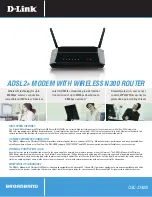
Weidmuller Wireless Ethernet Modem and Device Server User Manual
5
Rev Version 1.1
Chapter 1 - Introduction
The WI-MOD-xxx-E-5W Industrial 802.11-based Wireless Ethernet module provides wireless connections between
Ethernet devices and/or Ethernet wired networks (LANs). The WI-MOD-xxx-E-5W is a fixed frequency wireless
transceiver that operates within the 360 MHz to 512 MHz frequency spectrum in one of eight 20-MHz frequency
bands, depending on the model purchased.
The WI-MOD-xxx-E-5W module provides two serial connections and an Ethernet connection. It is possible to use all
three data connections concurrently, allowing the WI-MOD-xxx-E-5W to act as a device server where wireless
connections can be made between serial devices and Ethernet devices. The WI-MOD-xxx-E-5W also provides
functionality between serial Modbus RTU devices and Ethernet Modbus TCP devices. Appropriate driver
applications will be required in the host devices to handle other protocols. The modem is capable of passing VLAN
tagged frames.
The Ethernet connection is a standard RJ-45 connection that will operate at up to 100 Mbps. The module will
transmit the Ethernet messages on the wireless band at rates between 1 and 19.2 Kbps, depending on model,
band, encryption methods, and radio paths.
1.1..1 Network Topology
The WI-MOD-xxx-E-5W is an Ethernet device, and must be configured as part of an Ethernet network. Each WI-
MOD-xxx-E-5W module must be configured as one of the following:
•
Access point or client (station)
•
Bridge or router
Access Point vs. Client
The WI-MOD-xxx-E-5W module that is configured as an access point acts as the wireless master. The access point
accepts and authorizes links initiated by the client modules, and controls the wireless communications. Clients
(stations) are slave modules, and become transparent Ethernet links when connected to the access point.
Figure 1 shows a connection between two Ethernet devices using WI-MOD-xxx-E-5W Ethernet modems. In this
example, one
WI-MOD-xxx-E-5W is configured as an access point and the other as a client.
Figure 1 AP and Client
Figure 2 shows an existing LAN being extended using WI-MOD-Es. In this example, the access point is configured
at the LAN end
—although the wireless link will still work if the client is at the LAN end.






































